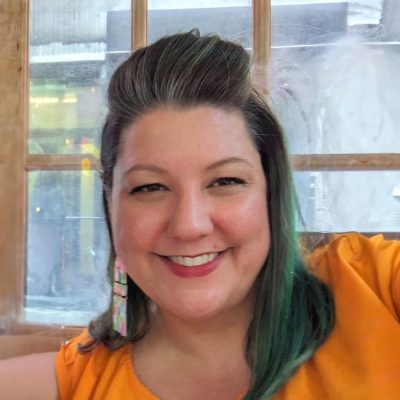RESEARCH FOUNDATIONS
2 Understanding How Information Is Made
Kathleen DeLaurenti and Andrea I. Copland
The Information Life Cycle
Most people in the 21st century consume information online through social media, news outlets, or pop-up advertisements. While information is more accessible than at any other point in human history, the way information is organized is highly dependent on historical approaches to how that information was created and shared. We call the model of how information is created and disseminated the information life cycle.
The information life cycle places information we consume on a timeline with milestones such as “Day of” or “Months after,” in temporal relation to an event. The information life cycle helps us discover what kind of information and research are available about any given event over time. Where a piece of information occurs in the information life cycle shapes how we think of it as evidence or potential research material.
The graphic below identifies milestones along the information life cycle.
Here is the most important thing to know about the information life cycle: WHEN we encounter a piece of information has a significant influence on the quality and quantity of information available. If we are hunting for information sources about the Grammy Awards in 2024 we will find a variety of primary sources on social media and in newspapers and magazines. If we are hunting for information about how scholars have analyzed the Grammy Awards and their impact on the music industry, we should seek out secondary sources in articles or books written and published by scholars. However, we might not expect scholars to cover the most recent awards ceremonies because of the time it takes for secondary research to be conducted and published. Tertiary sources like Wikipedia will summarize important facts an scholarship that has been published about the Grammy Awards over time. The information life cycle reflects how information sharing and technology work together (or sometimes not!) to create and disseminate new knowledge.
It is also important to know that the information life cycle follows Western European publishing traditions. For example, oral and nonwritten traditions of information sharing are completely absent, ignoring the ways that non-Western cultures may share information differently.
The information life cycle seems to be chronologically linear, moving from days to weeks to months to years. However, you may notice encyclopedias listed at the end of the information life cycle and wonder, “Why would it take 5 to 10 years for something to appear in an encyclopedia when Wikipedia is updated every day?”
The answer is that traditional encyclopedias are managed by large teams of editors who solicit experts to provide summaries of the scholarly landscape for readers. Some encyclopedias, like Oxford Music Online, focus on presenting expert perspectives from one academic discipline. The writing, editing, and publishing process is lengthy—it can take up to a decade to revise every article in a scholarly encyclopedia. This example shows how technology—in this case Wikipedia—can disrupt the traditional information life cycle. As you can see, these disruptions often impact the way we perceive knowledge production. But the information life cycle is still a helpful tool as a basic landscape for your research process.
Opportunities with new technology—such as immediately updating an entry in Wikipedia—can change audience expectations. The assumption that information can and should appear instantly influences the way information is produced and shared. However, as we discuss in Part III: Publishing Practices, business models that evolved around technology can be resistant to changing as quickly as technology might allow. This means that being an effective researcher depends on your understanding of the production of knowledge in the past and how those practices impact the way it is produced today.
Different Kinds of Information: Primary, Secondary, and Tertiary Sources
Navigating terminology when learning about the research process can be confusing. What do you call something in the information life cycle? What should you call information sources that include tweets, magazine features or news stories, and scholarly articles? Is there a difference between a scholarly article, a peer-reviewed article, and an academic article? (No, they’re all the same thing!)
In this book, we discuss information sources with consistent terminology:
- Resource: Any kind of information source can be a resource. We use this term when we mean “every kind of resource including popular, scholarly, and multimedia sources.”
- Scholarly article: This is a kind of article that follows the methodological and publication traditions of an academic discipline. It might be referred to as an academic article, a peer-reviewed article, or a journal article.
- Scholarly: We also apply the adjective to scholarly to describe books, presentations, and practices that involve peer-review and are part of all aspects of knowledge production created by scholars.
Traditionally the information these resources convey existed as physical objects. Today, the confusing part is that we don’t always interact with these resources in physical forms. This can make it hard to figure out which kinds of resources to use as evidence to support or contradict a claim we’re testing as researchers. To make it even more complicated, objects such as archaeological artifacts, archival collections, and ancestral heirlooms contain valuable information that simultaneously provides contextual knowledge and illuminates individual human experiences from a specific (and possibly remote) time and place.[1]
The first way we want to think about categorizing resources is in terms of a resource’s relationship to the event or phenomenon. The example of the 2024 Grammys earlier in this chapter employed the terms primary sources, secondary sources, and tertiary sources. These categories help us understand how specific kinds of resources situated along the information life cycle can serve as evidence in a research project.
Tertiary sources—summaries of scholarship—can help you decide where to get started or how to situate information needs that comprise your research question. Secondary sources can tell you what other scholars have discovered and which methodologies they used to engage with topics related to your research question. Finally, primary sources give you first-hand knowledge of events or music that you are studying. Examining these resources helps you form your own perspective and make contributions to the secondary source literature.
Primary Sources
Resources you find at the beginning of the information life cycle are primary sources that help you gather first-hand perspectives of an event or phenomenon. For example, to understand how Beyoncé’s album and documentary Renaissance were received, you can look at music magazines and websites like Billboard, Rolling Stone, or Pitchfork. You can also scour sites like Twitter/X or Instagram to learn what the broader fan community was saying when Renaissance was released.
When looking at historical events, we can expand the idea of primary sources to items such as letters, autobiographies, or diaries left behind by historical figures. Even scholarly articles can be primary sources! For example, if you are interested in understanding the history of popular music research studies, then the first scholarly articles about that topic will serve as primary sources for understanding how that academic discipline was formed and developed.
Musical performances can also be primary sources. This is especially true of audio recordings of world premieres or other notable interpretations of a musical work. You are often creating primary sources when you document your research-creation. Depending on a researcher’s question, research-creation centered in any one of the four modalities covered in the Chapter 1: What is Research? could become a primary source.
| Category | Description |
| Characteristics | As close as possible to the idea, event, or topic “eyewitness evidence”
Without analysis |
| Audience | The creator, sometimes their family, and close acquaintances (e.g., colleagues, students) |
| Uses in Research | As examples to support your argument
As examples you compare and contrast with each other As examples that help interpret a larger problem, question, or theme |
| Performing Arts Examples | Manuscripts, sketches, early printed editions
Scores and parts used in premiere or early performances Programs, press clippings, and reviews of performances Premiere or early sound recordings, field recordings (often the only source material for ethnography or ethnomusicology) Film footage of rehearsals, masterclasses, and performances Correspondence from composers and performers Photographs, notes on choreography, staging, costume design, and sets for dramatic works and dance |
| Interdisciplinary Examples | Creative works (e.g., paintings, musical manuscripts, novels, sculptures)
Patents, blueprints, and government documents Field research, interviews, and physical artifacts Personal correspondence, diaries, and autobiographies News reports and reviews Photographs, videos, and sound recordings |
| Notes | A source which may be secondary or tertiary in another context (including an encyclopedia) could be used as a primary source, depending on the research topic.
Primary sources may be scholarly or peer-reviewed. |
2-1. Dig Deeper
Inventory primary sources for your current research-creation project in your research journal.
- Which primary sources are the most relevant to your current research creation project?
- Where would you situate these primary sources on the information life cycle?
- What information will these primary sources help you understand about your current research-creation project?
Secondary Sources
Secondary sources can be found a little further along on the information life cycle. These sources are the result of scholars employing a methodology from their discipline to analyze primary sources. Common secondary sources include scholarly articles and scholarly books. They can also help you access or understand the way other scholars have analyzed primary sources on a topic. Unlike general nonfiction, scholarly books go through a process of peer-review where other scholars assess the book for clarity, accuracy, and potential contributions to knowledge. The longer format of a book allows scholars to answer research questions that broadly address a topic, framework, or idea. Scholarly books can also help you access or understand how other scholars have analyzed primary sources, especially resources that are material and not textual. They provide analysis of music manuscripts, instruments, or artifacts that you may not be able to examine in person or that you may not have the expertise to analyze as documents.
Musicians may also produce secondary sources through performance. This is most likely to happen when you are working in the modality of research-for-creation or creative presentations of research. When working in these modalities, your performance is presenting your analyses of primary and secondary sources while synthesizing your research-creation into a source for other researchers to examine.
| Category | Description |
| Characteristics | About primary sources
Provide analysis, commentary, or discussion |
| Audience | Other researchers (and readers) interested in the topic |
| Uses in Research | As confirmation for your argument
As a starting point for your argument, which you enhance or expand upon As a starting point for your argument, which you disagree with As a means of clarifying your argument |
| Performing Arts Examples | An analysis of a musical work
Journal articles and books Book reviews |
| Interdisciplinary Examples | Scholarly articles
Newspaper articles interpreting rather than reporting events |
| Notes | Identifying a secondary source is all about the context of your research topic
Check the source’s references; If a source you are using also cites your primary source, that’s a clue that it could be a secondary source for your research. |
2.2 Dig Deeper
Inventory secondary sources for your current research-creation project in your research journal.
- Which secondary sources are the most relevant to your current research creation project?
- Where would you situate these secondary sources on the information life cycle?
- What information will these secondary sources help you understand about your current research-creation project?
Tertiary Sources
Tertiary sources, such as encyclopedias, are not designed to add to the scholarship of an academic discipline but to summarize it. In that regard, even though Wikipedia is updated quickly, it can be limited when it presents information that is very recent. Tertiary sources rely on a rich body of published primary and secondary sources to present summaries of published perspectives from a disciplinary or general perspective. Wikipedia provides general perspectives quickly, sometimes almost immediately after information is published about an event. Gaining understanding from a specialist perspective takes time, because those perspectives need to be developed and then published. To avoid potential inaccuracies from its quick publication cycle, Wikipedia utilizes editorial standards that prescribe what kinds of sources are required to create or add to an article on the site. This approach has proven to be incredibly valuable at providing a quickly produced general resource. However, specialized resources represent decades of research knowledge and still hold value. Older, musicology-focused encyclopedias, notably the New Grove Encyclopedia of Music and Musicians, remain important tools for understanding the specialized research landscape on important music topics.
New encyclopedias like Wikipedia and traditional encyclopedias like New Grove each have benefits and limitations. Wikipedia requires a learner to have more expertise to know what might be missing, and despite the ability to publish quickly, learners need to recognize that these articles also improve over time as more experts contribute. New Grove requires a learner to examine when its content was last updated and have some knowledge of how research perspectives have changed since that time. While you can be confident in the scholarly process used to create New Grove articles, musician-scholars still need to read closely to see what perspectives might be missing and plan for what secondary sources might be missing.
| Category | Description |
| Characteristics | Provide overviews and context on a topic but generally no original material on that topic
Often referred to as “reference sources” |
| Audience | Everyone! This is the original “Google search” for quick answers to everyday questions. |
| Uses in Research | To get background information on a topic
To quickly find additional sources about a topic To learn the meanings of technical language or jargon in other sources on your topic |
| Performing Arts Examples | Indexes
Encyclopedias Critical editions Bibliographies |
| Interdisciplinary Examples | Textbooks,
Dictionaries, manuals, guides, and fact books Literature reviews |
2.3 Dig Deeper
Inventory tertiary sources for your current research-creation project in your research journal.
- Which tertiary sources are the most relevant to your current research creation project?
- Where would you situate these tertiary sources on the information life cycle?
- What information will these tertiary sources help you understand about your current research-creation project?
Conclusion
It’s evident that the information life cycle is a useful tool for situating how resources can be used as evidence or examples in your research-creation. We also define ways to classify different kinds of resources that we might use in our research. This begins to create a foundation for approaching specific research-creation projects that align with your artistic practice. In the next chapter, we’ll examine historical approaches to archiving and organizing information as well as the methodologies historically used by music researchers. Gaining familiarity with these foundational concepts about how music research is made, organized, and archived help us align our information needs with the information systems we access in our research-creation work.
Key Takeaways
Use the information life cycle as a tool to understand how information is created over time.
Match your information needs to the concepts of primary, secondary, and tertiary sources. This helps you situate them in the information life cycle based on their relationship to the event or phenomenon you are researching.
Primary sources, such as social media, blogs, music manuscripts, or newspapers, provide firsthand perspectives on events. These sources help you understand immediate reactions and contexts.
Secondary sources, such as scholarly articles and books, provide in-depth analyses and interpretations of events or phenomena. These sources give you to access scholarly discussions and application of different methodologies.
Tertiary sources, including encyclopedias and indexes, provide summaries and general contexts. These are useful for background information and quick reference.
Be aware of the information life cycle’s limitations, particularly its linear, Western bias and the exclusion of oral traditions. This awareness encourages a more inclusive and critical approach to research.
Media Attributions
- Music Research concept © Peabody Institute is licensed under a CC BY (Attribution) license
- Michael K. Buckland, “Information as Thing,” Journal of the American Society for Information Science 42, no. 5 (1991): 351–60, https://doi.org/10.1002/(SICI)1097-4571(199106)42:5<351::AID-ASI5>3.0.CO;2-3. ↵
a map that demonstrates how publishing influences the way information is shared over time.
an information source that provides information as close as possible to first-hand from when an event of phenomenon happened
an information source, typically a scholarly book or scholarly article, that analyzes primary sources or empirical data
an information source that summarizes secondary research to provide overviews of a topic; tertiary sources written for scholarly use are generally organized by discipline or topic
an article published in a scholarly journal that has been peer-reviewed; also often called a peer-reviewed or academic article
the process of having your scholarly article or book reviewed by academic peers that have expertise in the same field of research
a recognition that you need information to answer a question. information needs occur in daily life and research practices
a central question or thesis that serves as the central inquiry of a specific research-creation project
research that includes performative or non-text creative aspects as the result, motivation, or methodology for the research itself (see Chapman and Sawchuck)
a systematic approach used by a discipline to conduct research



